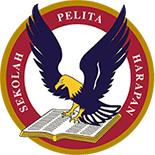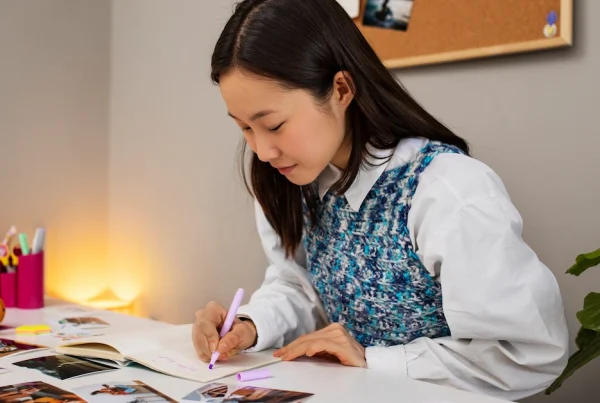We often hear about problem-solving, but how can we teach it on a deeper level and help others understand that it’s more than just a math equation or a schoolwork exercise? Creative problem-solving goes beyond conventional methods; it approaches challenges with innovative thinking and explores various solutions. This skill is essential for academic success, personal growth, and future career opportunities.
Schools are instrumental in building on this ability, helping students develop the creativity and critical thinking needed to tackle complex problems and make meaningful contributions to their communities.
Below are some practical activities to implement that can foster creative problem-solving skills in students.
Why Early Development of Creative Problem-Solving Skills Matters
Instilling creative problem-solving skills from a young age can have lasting benefits that extend well beyond the classroom. Here are some of the key advantages:
1. Improved Critical Thinking Skills
Creative problem-solving encourages students to critically analyze situations from multiple perspectives, question assumptions, and evaluate possible solutions. This enhances their ability to think logically and make well-informed decisions.
2. Enhanced Problem-Solving Abilities
When students learn to approach problems creatively, they become adept at identifying innovative solutions. This skill is valuable in academic settings and everyday life, where challenges often require out-of-the-box thinking.
 3. Increased Innovation and Creativity
3. Increased Innovation and Creativity
By developing creative problem-solving skills, students are more likely to innovate and come up with original ideas. This creates a mindset of creativity that can lead to breakthroughs in various fields.
4. Boost in Confidence and Self-Esteem
Successfully solving problems creatively gives students a sense of accomplishment, boosting their confidence and self-esteem. This positive reinforcement encourages them to tackle more challenging tasks with determination.
Also Read: Raising Teenagers: 7 Essential Guide for Parents
6 Creative Problem-Solving Examples for Students
Effective problem-solving involves a variety of strategies that help students develop critical thinking, creativity, and ethical reasoning. Here are six engaging activities designed to enhance these skills, each offering a unique approach to tackling challenges and making thoughtful decisions.
1. Brainstorming Activities
Encourage students to engage in brainstorming sessions where they generate multiple solutions to a problem. This process involves free association, allowing them to express any ideas that come to mind without judgment.
For instance, if students are tasked with finding ways to reduce waste at school, they might brainstorm ideas like starting a recycling program, creating compost bins, or organizing a waste-reduction awareness campaign.
Building on their ideas and those of others can lead to more refined and innovative solutions. Introducing constraints or limitations, such as using only a limited set of resources, further challenges their creativity and helps them think more resourcefully. Brainstorming sparks creativity and teaches students that problem-solving involves exploring a wide range of possibilities rather than finding a single “right” answer.
2. Mind Mapping
Mind mapping is a visual technique that helps students organize their thoughts and ideas. It begins with a central concept or problem in the middle of a page, around which related sub-topics or categories are organized into branches. These branches can further divide into smaller ones, visually representing how different ideas connect.
Using keywords and images instead of whole sentences makes the mind map more engaging and easier to understand. By creating a mind map, students can visualize connections between different concepts and explore various pathways to a solution, which helps them organize complex information and identify patterns or relationships.
For example, when planning a community event, students might use a mind map to organize their ideas. The central idea might be “Community Event,” with branches for “Venue,” “Activities,” “Food,” and “Promotion.” Each branch would then break down into more specific tasks, such as “Venue,” including “location,” “decorations,” and “setup.”
This visual organization helps students see how different elements of the event are interrelated and manage the planning process more effectively.
Also Read: Boosting Teen Success: 4 High School’s Roles in University Preparation Program
3. Role-Playing and Simulations
Role-playing and simulations involve stepping into different roles and imagining how to handle various situations. Encourage students to assume different characters or roles in hypothetical scenarios, such as a detective solving a mystery or a leader managing a team.
Developing realistic scenarios that challenge them to think through problems from different perspectives helps build empathy and enhance problem-solving skills. After the exercise, discussing how they approached the problem and what they learned provides an opportunity for reflection and consideration of alternative approaches. This method helps students develop empathy by seeing situations from others’ viewpoints and encourages creative thinking.
In a role-playing scenario where students act as city planners, they might work together to design a new park. Each student could take on a different role, such as environmentalist, architect, or local resident, to provide input on the park’s features. This exercise helps students understand different perspectives and consider how each role influences the final design, enhancing their ability to approach problems collaboratively and empathetically.
4. Design Thinking Challenges
Design thinking is a problem-solving approach that emphasizes empathy, creativity, and experimentation. Begin by helping students understand the needs and experiences of those affected by the problem, which involves researching or interviewing others for insights. Define the problem clearly to guide the ideation process.
Encourage brainstorming a wide range of potential solutions, emphasizing that all ideas are valid during this stage. Create simple prototypes or models of the solutions to visualize the ideas. Test these prototypes to see how well they address the problem, gather feedback, and refine the solutions based on what is learned. This approach fosters a mindset of empathy and experimentation, encouraging practical problem-solving skills and adaptability based on feedback.
When tackling a challenge like improving access to books for underprivileged children, students might start by interviewing local community members to understand their needs. They could then brainstorm solutions such as setting up a book drive, creating a mobile library, or partnering with local businesses for donations. By prototyping and testing their ideas, such as organizing a small-scale book drive, they can gather feedback and adjust their approach, ultimately finding the most effective way to address the problem.
5. Venn Diagrams
Venn diagrams are an effective tool for visualizing complex relationships. In this activity, have students list their individual goals and then create a Venn diagram to map out both personal and group goals. This exercise helps students understand how their objectives align with those of the group. By visualizing these connections, students can better appreciate the interplay between their personal ambitions and collective goals.
For example, if students are working on a group project, they might use a Venn diagram to identify overlapping goals such as improving teamwork or achieving specific project milestones. This method encourages critical thinking and illustrates how collaborative efforts can support individual aspirations.
6. Moral Dilemmas
Moral dilemmas involve making decisions that balance conflicting ethical principles. Present students with scenarios where they must choose between two morally challenging options. For example, ask them to consider whether it is acceptable to steal a bag of chips when hungry. Explain that these scenarios are designed to test their ability to make ethical decisions despite limited options.
This activity enhances students’ advanced thinking skills and prepares them for real-world ethical challenges. It encourages them to reflect deeply on moral issues and develop a framework for making tough decisions. Discussing their choices and reasoning afterward helps them articulate their values and understand different perspectives.
Creativity from a Biblical Perspective
From a Christian perspective, creativity and innovation are seen as gifts from God meant to be used for the greater good. The Bible highlights these gifts through stories like Noah’s Ark and Solomon’s Temple. Imagination, shown in the visions of the prophets and Jesus’ parables, helps us understand God’s work and our purpose.
Schools should encourage students to use their talents to serve others and honor God through community projects and service-learning, as described in Matthew 5:16. Building upon an environment that values creativity and innovation can inspire students to develop their ideas, solve problems, and contribute positively, following the example set in the Bible.
Also Read: 5 Fun and Easy Critical Thinking Activities for 5-Year-Olds
Conclusion
Creative problem-solving is an essential skill that students need to thrive in today’s world. Cultivating creativity in the classroom and encouraging creative activities at home can help students develop the critical thinking, problem-solving, and innovation skills that are crucial for success in an ever-changing global landscape. By engaging in creative problem-solving, students learn to approach challenges with an open mind, adapt to new situations, and find innovative solutions that go beyond conventional thinking.
Schools like Sekolah Pelita Harapan (SPH), which offer an inquiry-based approach to learning and passion-based exploration opportunities, provide an ideal environment for nurturing these skills. At SPH, students are encouraged to explore their interests, ask questions, and engage in hands-on learning experiences that foster creativity and critical thinking. This holistic approach not only enhances academic performance but also equips students with the confidence and resilience to tackle real-world problems.
Discover more about SPH’s Learning Pathway, where creativity and innovation are at the core of our educational philosophy. Learn how our IB School programs can support your child’s journey into creative problem-solving and innovative thinking. Contact us today to start your child’s journey with SPH and unlock their full potential.









